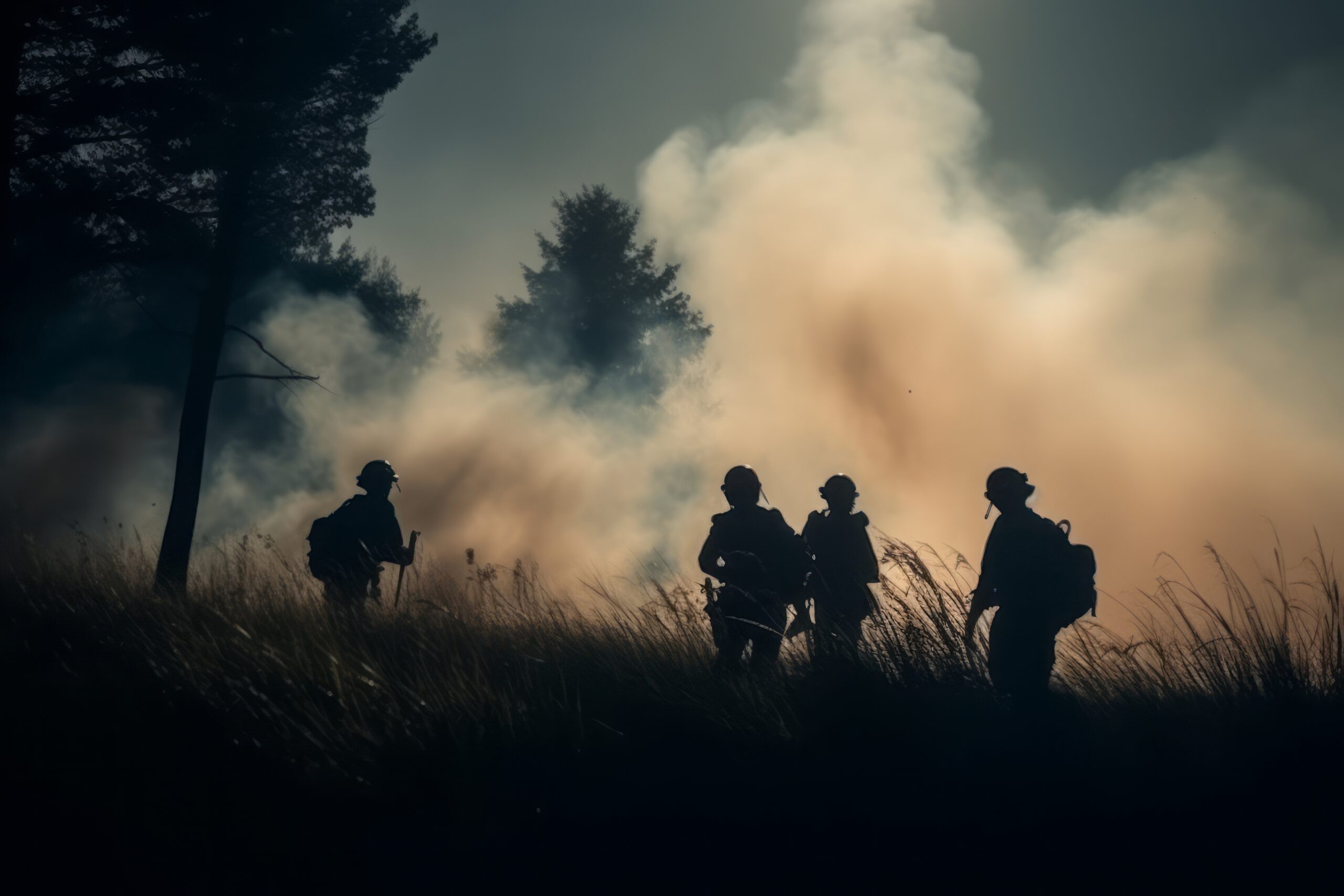July 25 2023
2023 has been the worst year for forest fires in Canada. A mild winter and a dry spring created the perfect conditions to ignite the country. Fires burning simultaneously in province after province has created pressure on our firefighting human resources and infrastructure like never before. And like anything under that much pressure, the cracks in our systems are being exposed. And while the public may have never seen these cracks forming, workers on the frontlines have been confronting them for years.
“Our wildland firefighters have been putting themselves in harms way day after day,” said Bert Blundon, President of the National Union of Public and General Employees (NUPGE). NUPGE represents wildland firefighters across the country. “This season alone, we are mourning those who have lost their lives on the job. Not only do they work in dangerous, and sometimes deadly situations, they are fighting to get by on so many levels. We need governments to understand this and take their issues seriously.”
Climate change making conditions worse
Across the country we have seen record high temperatures. In areas where there is a reduction in snowfall, or that have earlier snowmelts, forest beds are remaining only superficially wet. The moisture does not soak deeper into the ground, so when a fire starts it burns the dry vegetation and deeper the ground, allowing stronger and faster spread. These conditions create longer fire seasons, and more complex fires to fight, and fires that are harder to put out.
Human resource planning has not kept up with new realities
Recruitment and retention in the sector have been a major impediment to our firefighting infrastructure. The seasonal and temporary hiring of wildland firefighters make employment more precarious in nature than in other environments. Research shows that low wages, dangerous working conditions, poor work-life balance, and increasing concern about health implications are all conditions that are making it harder to attract and keep workers.
A 2016 report from a task force created to examine recruitment and retention of fire rangers indicated that “the province’s fire rangers were quitting at an alarming rate, were less experienced than in previous years and were comparatively underpaid.” (Global News) Global News examined retention reports for 2016, 2018, and 2019 which repeatedly raised the same issues.
The problem of recruitment brand retention is high real. The best training can be found working with more experienced team members. But when we are losing expertise and knowledgeable workers, we are losing years of experience and training, leaving a weaker firefighting system.
According to a Reuters survey of provinces and territories (excluding the Yukon) showed Canada employs around 5,500 wildland firefighters. Mike Flannigan, a wildfire specialist and professor at Thompson River University in BC, said that number is “roughly 2,500 firefighters short of what is needed.” (Reuters)
Often, during active wildfire season, provinces contract firefighters from other provinces to supplement their workforce. But during this year’s fire season, with hundreds of fires burning in almost every province, it has been difficult to find workers. Provinces have had to rely on members of the military and international allies to compensate.
Long-term health and safety concerns plague the workforce
Firefighting is an especially risky profession in both urban and rural areas. Working in dangerous environments, facing extreme temperatures and noises, and exposure to harmful chemicals all have the potential to lead to serious long-term illnesses. Firefighters are at increased risk of cardiovascular disease, pulmonary disease, mental health concerns, noise-induced hearing loss and cancer. It is the last one that is the main source of contention for wildland firefighters. Unlike urban firefighters and some emergency response workers, wildland firefighters do not have access to presumptive coverage when it comes to cancer. This needs to change.
Double standard in pension accrual
There are 2 major issues facing wildland firefighters. First, is that since forest fires don’t burn on a regular 9 to 5 schedule, a large portion of a firefighters’ salary is overtime. These earnings are not included as a pensionable service which means their pensions are severely lower than they should be.
But it’s not just that. Because wildland firefighters are not included in the definition of public safety occupations (PSO) under the federal Income Tax Act Regulations, they cannot retire at the same age as urban firefighters.
NUPGE is lobbying the federal and provincial government to have wildland firefighters included in the PSO to ensure wildland firefighters receive the benefits they deserve.
Wildland firefighters need wages and benefits that reflect the dangers of the work
“Firefighters face similar risks, no matter where they work. Their jobs threaten their lives daily. These workers should receive fair wages, equal pension benefits and have access to health and safety provisions that recognize the dangers they face,” said Blundon. “All governments need to rethink their human resource plans to prevent more workers from facing increased physical and mental injuries. More incentives are needed to recruit new workers to strengthen the workforce. And we all need to work together to find ways to mitigate climate change.”

